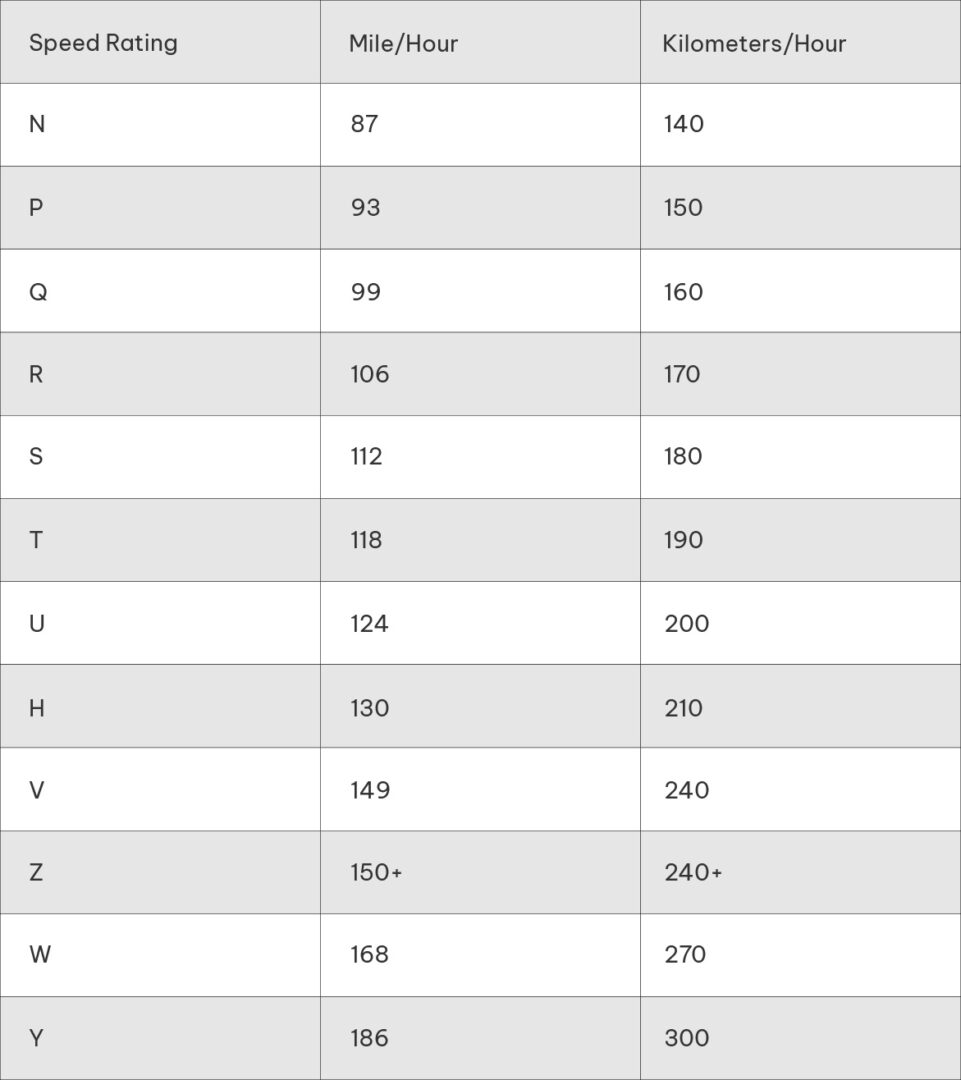You find the speed rating of a tyre on the sidewall. Like in the image, you will find it at the end of the tyre’s size. It is always represented by a letter – in the example above the tyre speed rating is “H”. This is preceded by the maximum load rating which is what the tyre can carry.
Once you know your tyre speed rating, you can work out what is the maximum speed your tyre is capable of maintaining. The tyre speed rating matters very little in this context as it will be more often than not above the legal speed limit.
For example, the “H” rating seen in the image, tells us that this tyre can reach speeds of up to 130mph or 210kmh.
These speed ratings are based on practical tests that engineers run when new tyres are designed – making sure the tyres can safely reach high speeds. Check your speed rating before purchasing tyres.
Tyre Speed Rating Table

When it comes to tyres, understanding the various tyre markings and in this case speed symbol is crucial. The load rating indicates the weight a tyre can safely carry, while the speed rating determines its top speed capability. It’s important to consult your vehicle’s owner’s manual to find the recommended load index and speed rating. Never mix tyres with different speed ratings as it can compromise handling and safety. Remember, fitting tyres with a lower speed rating than needed risks performance, while opting for tyres with a higher speed rating provides added safety at higher speeds.
FAQ
The tyre speed rating can typically be found on the sidewall of the tyre, following the load index. It is usually represented by a letter (e.g., “H” or “V”).
The speed rating is determined based on extensive testing and represents the maximum speed a tyre can safely handle under specific conditions. It is calculated through a combination of laboratory and field tests.
Speed ratings are not solely about speed. They also indicate the tyre’s ability to dissipate heat generated at high speeds, which affects its overall performance and durability.
Yes, it is generally safe to fit tyres with a higher speed rating than required. However, it is essential to ensure that the other specifications, such as load capacity, remain suitable for your vehicle.
It is generally not recommended to fit tyres with a lower speed rating than required. Tyres with lower speed ratings may not be designed to handle the heat and stresses associated with higher speeds, compromising safety and performance.
It is generally advisable to avoid mixing different speed ratings on your vehicle tyres. Having mismatched speed ratings can affect the overall handling and stability of the vehicle.
If you have the wrong speed rating, it can potentially compromise the tyre’s performance and safety. The tyre may overheat and wear more quickly at higher speeds, leading to reduced control and increased risk of a blowout or loss of traction. It is important to choose a type of tyre with the appropriate speed rating for your vehicle.
Happy Motoring!

